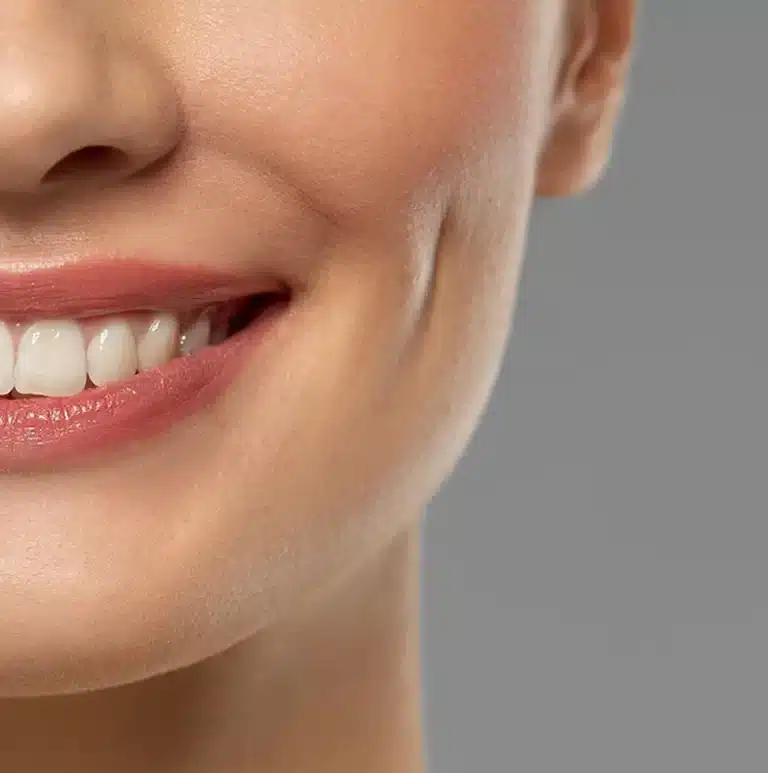Liposuction fat transfer offers a unique solution for those seeking body contouring. Understanding its safety profile is crucial for anyone considering this procedure. With advancements in techniques, many people are curious about the risks and benefits involved. This method not only removes unwanted fat but also redistributes it to enhance areas like the breasts or buttocks, providing access to a more contoured institution. Patients often wonder if it’s a safe choice for them. Knowing the safety measures and potential side effects can help make informed decisions. This post will dive into the safety aspects of liposuction fat transfer, ensuring you have all the information needed to weigh your options effectively.
Key Takeaways
- Liposuction fat transfer can be a safe option for body contouring when performed by a qualified surgeon, so choose your provider carefully.
- Understand the safety measures in place, such as sterile environments and monitoring during the procedure, to minimize risks.
- Ideal candidates are those in good health with realistic expectations; consult with a healthcare professional to determine if you meet these criteria.
- Be aware of common side effects like swelling and bruising, and discuss potential complications with your surgeon beforehand.
- Follow recovery guidelines closely to enhance healing and reduce the risk of complications post-surgery.
- Long-term results can be effective, but maintaining a healthy lifestyle is crucial for lasting outcomes.
Understanding Liposuction Fat Transfer
Definition
Liposuction fat transfer is a surgical procedure. It involves accessing the institution for removing fat from one area of the body and reinjecting it into another. This technique is also known as autologous fat grafting. Surgeons typically use liposuction to harvest the fat. The removed fat can then be processed and prepared for injection.
Popularity
Fat transfer surgeries have gained popularity in recent years. Many people seek this procedure to enhance volume in specific areas. Common sites include the breasts, face, and buttocks. Patients appreciate the natural look that these procedures offer. They often prefer using their own tissue, such as fat grafts, rather than synthetic implants. This reduces concerns about foreign materials in the body.
Benefits of Autologous Fat
Using autologous fat has significant advantages. The main benefit is a lower risk of allergic reactions. Since the fat comes from the patient’s own body, there is less chance of rejection. This makes the procedure safer for many individuals. The transplanted fat can improve overall body contours.
Safety Profile
The safety profile of fat grafting procedures is generally favorable. Most patients experience minimal side effects. Common issues include swelling and bruising at both the donor and recipient sites. Serious complications are rare but can occur. These may include fat necrosis, where some of the injected fat dies due to inadequate blood supply.
Recovery Process
Recovery after a fat grafting procedure varies by individual. Most people return to normal activities within a week or two. Surgeons usually recommend avoiding strenuous exercise during recovery. Patients should monitor their bodies for any unusual symptoms, such as excessive pain or infection signs.
Long-Term Results
The longevity of results from fat grafting depends on various factors. Not all transplanted fat survives after injection. Typically, 50% to 70% of the injected fat may remain long-term. Factors influencing retention include the technique used and individual healing responses.
Evaluating Safety Measures
Surgeon Selection
Choosing a qualified and experienced surgeon is crucial for liposuction fat transfer. Surgeons should be board-certified in plastic surgery. They must have completed extensive training and possess a solid track record. Research shows that patient outcomes improve significantly with skilled professionals. A 2019 analysis indicated that complications decreased when performed by experienced surgeons.
Patients should also review before-and-after photos of previous surgeries. This helps set realistic expectations. Reading patient testimonials can provide insight into the surgeon’s skills. It’s essential to feel comfortable and confident in the chosen doctor.
Standardized Protocols
Adhering to standardized protocols is necessary to minimize risks during the procedure. Medical institutions often rely on established guidelines to ensure safety. These protocols include pre-operative assessments, anesthesia choices, and post-operative care plans.
An institutional review board (IRB) typically oversees these protocols. The IRB ensures that all practices meet safety standards and ethical considerations. Compliance with these guidelines can lead to better surgical outcomes and fewer complications.
Surgeons should follow specific steps during the procedure. For example, they must use sterile techniques to prevent infections. They should also monitor vital signs throughout the operation. This vigilance helps identify any potential issues early on.
Pre-Surgical Assessments
Pre-surgical assessments are vital for evaluating patient suitability. These assessments help identify any underlying health conditions that may complicate surgery. Patients undergo a thorough medical history review and physical examination.
During this evaluation, doctors analyze various factors such as weight, overall health, and lifestyle habits. They may request lab tests or imaging studies to gain further insights. These analyses enable surgeons to make informed decisions about proceeding with surgery.
By assessing patients beforehand, healthcare professionals can reduce complications during and after surgery. For instance, patients with certain medical conditions may need additional monitoring or alternative treatment options.
In summary, ensuring safety in liposuction fat transfer involves multiple layers of evaluation and preparation. Selecting a qualified surgeon, adhering to standardized protocols, and conducting thorough pre-surgical assessments are all critical steps in this process.
Ideal Candidates for the Procedure
Natural Enhancement
Individuals seeking natural enhancement without synthetic implants are often ideal candidates for this cosmetic procedure. Many patients prefer fat transfer as it uses their own body fat instead of foreign materials. This approach reduces the risk of rejection and complications associated with synthetic implants.
Sufficient Donor Fat
Candidates must have sufficient donor fat available in areas like the abdomen or thighs. The amount of fat harvested is crucial for successful fat grafting procedures. Surgeons typically assess the donor sites during consultations to ensure enough fat can be obtained. Without adequate donor fat, the procedure may not yield satisfactory results.
Good Overall Health
Candidates should be in good overall health before undergoing this cosmetic procedure. An experienced plastic surgeon will evaluate each patient’s medical history and current health status. Those with chronic illnesses or conditions could face higher risks during surgery. Maintaining a healthy lifestyle can improve surgical outcomes and recovery.
Realistic Expectations
Having realistic expectations is essential for potential patients. Understanding what liposuction fat transfer can achieve helps prevent disappointment. Surgeons educate patients about possible outcomes and limitations during consultations. Patients should recognize that results vary based on individual body types and other factors.
Age Considerations
Age can also play a role in determining eligibility for this procedure. Younger patients often have more elastic skin, which can enhance results. However, older patients may still qualify if they meet other criteria and are in good health. Each case is unique, so thorough assessments are necessary.
Emotional Readiness
Emotional readiness is another critical factor for candidates. Patients should feel confident in their decision to undergo the procedure. Those who are emotionally stable tend to have better experiences and recoveries post-surgery. Support from family and friends can also help them through the process.
Consultation Importance
Consultation with eligible plastic surgeons is vital for individuals considering this cosmetic procedure. During these meetings, surgeons discuss the patient’s goals and concerns. They provide detailed information about the risks and benefits involved in liposuction fat transfer.
Follow-Up Care
Post-operative care is important for all candidates. Following the surgeon’s instructions can lead to better healing and results. Regular follow-up appointments allow surgeons to monitor recovery progress and address any issues.
Common Side Effects and Risks
Side Effects
Liposuction fat transfer can lead to several common side effects. Swelling often occurs at the donor and recipient sites. This can last for weeks but usually subsides over time. Bruising is also frequent. It appears due to the surgical process and generally fades within a few days.
Temporary numbness may happen as well. This sensation can affect areas near where the fat was removed or injected. Most patients report that this feeling resolves on its own, but it can be uncomfortable.
Discomfort
Patients may experience temporary discomfort after the procedure. This pain can arise from both the liposuction and the fat transfer processes. The average amount of pain varies among individuals, but most describe it as manageable with over-the-counter medications.
Discomfort at the donor site is common. Patients often feel soreness where fat was taken from, such as the abdomen or thighs. Similarly, the recipient site may feel tender for some time after surgery.
Asymmetry
Acknowledge the potential for minor asymmetry post-procedure. Each body is unique, and results can vary from person to person. In some cases, one side may appear slightly different than the other after healing.
This asymmetry is often minor and can improve over time as swelling decreases. Surgeons aim for balance during the fat transfer process, but small differences may still occur.
Long-Term Risks
While many side effects are temporary, some risks can persist for years. Infection is a rare but serious concern. If bacteria enter through incisions, treatment with antibiotics may be necessary.
Another risk involves changes in breast sensation after fat transfer to this area. Some patients notice altered sensitivity following surgery. This change can often resolve, but it might take time.
Potential Complications to Consider
Major Complications
Liposuction fat transfer can lead to major complications. One significant concern is fat necrosis. This occurs when transferred fat cells die. The body may absorb these dead cells, leading to lumps or hard areas in the skin. Infection is another serious risk. It can happen during or after the procedure. Proper sterilization and care help reduce this risk.
The major complication rate for liposuction fat transfer is low. Studies show that serious infections occur in less than 1% of cases. However, patients must remain vigilant about signs of infection, such as increased redness or swelling.
Minor Complications
Minor complications are more common than major ones. Seromas and hematomas can develop after surgery. A seroma is a pocket of fluid that forms under the skin. Hematomas are collections of blood outside blood vessels. Both conditions may require additional treatment but usually resolve on their own.
Pain and swelling are also expected after the procedure. Most patients experience some discomfort, which typically subsides within a few days. Bruising may occur at the site of injection or liposuction.
Fat Emboli Complications
Fat emboli complications are rare but serious. These occur when fat enters the bloodstream and travels to the lungs or brain. Symptoms may include shortness of breath, confusion, or a rash. While some studies suggest a potential risk, most cases do not report this complication.
Surgeons take precautions to minimize this risk during procedures. They use careful techniques to ensure fat cells stay within safe limits during transfer.
Postoperative Concerns
Postoperative complications can arise after any surgical procedure, including liposuction fat transfer. Patients should follow all postoperative instructions closely. These include avoiding strenuous activities and keeping the area clean.
Monitoring for signs of complications is crucial. Patients should be aware of symptoms like fever, excessive pain, or unusual swelling. Immediate medical attention may be necessary if these symptoms occur.
In summary, while liposuction fat transfer has its risks, most complications are minor and manageable. Major complications like fat necrosis and infection can happen but are rare with proper care. Monitoring for minor issues such as seromas and hematomas is essential for recovery. Awareness of potential fat emboli complications is important, though they are not commonly reported.
Recovery and Post-Surgery Care
Importance of Instructions
Following postoperative changes is crucial for recovery. Patients must adhere to their surgeon’s care instructions. These guidelines help minimize risks and ensure optimal healing. Ignoring them can lead to complications. For instance, proper care reduces the chance of chronic wound damage.
Patients often experience swelling and discomfort after surgery. This is normal but should be monitored closely. Surgeons provide specific advice on managing pain and caring for incisions. Following these recommendations aids in a smooth recovery.
Compression Garments
Wearing compression garments plays a significant role in the healing process. These garments help reduce swelling and support the treated areas. Many surgeons recommend wearing them for several weeks post-surgery. They apply pressure to the skin, promoting better blood flow and minimizing fluid buildup.
Compression garments also help shape the body after procedures like breast reconstruction or bbl surgery. They can enhance results by ensuring that the body heals in its new form. Patients should wear these garments as directed for best outcomes.

Follow-Up Appointments
Regular follow-up appointments are essential after surgery. These visits allow surgeons to monitor progress and address any concerns. Patients should schedule these appointments according to their surgeon’s recommendations.
During follow-ups, surgeons review postoperative clinic notes and assess healing. They may check incisions for signs of infection or other issues. If patients have questions about pain or swelling, they should bring them up during these visits.
Surgeons can adjust treatment plans based on each patient’s unique recovery journey. This personalized approach helps achieve optimal results from cosmetic surgery or reconstructive procedures.
Pain Management
Managing pain effectively is vital during recovery. Surgeons often prescribe medications to alleviate discomfort. Patients should take these medications as instructed, avoiding overuse.
In addition to medication, non-pharmaceutical methods can help manage pain. Techniques like ice packs or elevation of the affected area can provide relief. Discussing pain levels with healthcare providers ensures that patients receive adequate support.
Incision Care
Caring for incisions properly is another critical aspect of recovery. Patients must keep the area clean and dry to prevent infection. Surgeons typically provide specific cleaning instructions.
Checking incisions regularly for signs of infection is important. Symptoms may include increased redness, swelling, or discharge. Reporting these symptoms promptly can prevent complications.
Long-term Results and Effectiveness
Efficacy of Liposuction
Liposuction fat transfer can yield long-lasting results. Patients who maintain a stable weight after the procedure often enjoy these outcomes. Clinical trials have shown that the effects can remain for several years. However, individual results may vary based on lifestyle choices.
e studies indicate that about 30% of transferred fat may be reabsorbed by the body over time. This absorption can affect the final appearance of the treated area. It is essential for patients to understand this aspect when considering liposuction fat transfer.
Short-term and Long-term Effects
Short-term results can be noticeable soon after surgery. Many patients report satisfaction with their new contours quickly. However, it is crucial to recognize that long-term effects depend on various factors. Weight fluctuations can lead to changes in the results achieved from the procedure.
A retrospective study highlighted that maintaining a consistent weight significantly impacts long-term effectiveness. Those who gained or lost weight post-surgery often saw a change in their results. Therefore, patients should focus on a healthy lifestyle to maximize their outcomes.
Success Rates from Studies
Multiple reports and analyses support the success rates of liposuction fat transfer. A series of clinical studies reveal a high satisfaction rate among patients. Many individuals express happiness with their enhanced appearance.
Statistical significance in these studies shows that most patients experience positive outcomes. The success of the procedure largely depends on the surgeon’s technique and experience. Proper technique leads to more natural-looking enhancements.
Natural-Looking Enhancements
The goal of liposuction fat transfer is to create subtle, natural-looking improvements. With skilled practitioners, patients can achieve results that blend seamlessly with their body contours. The aesthetic appeal lies in enhancing features without making them look artificially altered.
Surgeons utilize advanced techniques to ensure even distribution of fat cells during the transfer process. This attention to detail contributes significantly to achieving desirable results.
Patients should consult with experienced surgeons to discuss their goals and expectations. Understanding the potential for natural-looking enhancement helps set realistic outcomes.
Safety of Specific Procedures
Recipient Sites
Liposuction fat transfer can target various recipient sites. Common areas include the breasts and face. Each site has unique characteristics that may influence safety profiles.
Studies show that the complication rates remain consistent across these sites. For instance, a study from a single institution observed similar outcomes when comparing breast and facial procedures. This consistency suggests that liposuction fat transfer is a safe procedure regardless of the area treated.
Complication Rates
Complications can occur in any medical procedure. However, the data indicates no significant differences in complication rates for liposuction fat transfer between different recipient sites.
In a review of multiple studies, researchers found that complications were often minor. Common issues included temporary swelling or bruising at the injection site. Serious complications, such as vascular compromise or blindness, were absent in these cases. This reinforces the notion that liposuction fat transfer is generally safe.
Surgical Objectives
The objectives of liposuction fat transfer vary based on the area being treated. Surgeons aim to enhance volume and improve contour while ensuring patient safety.
Surgeons utilize specific techniques tailored to each recipient site. These techniques minimize risks and maximize results. For example, injecting fat into the breast requires careful placement to avoid damage to surrounding tissues. Similarly, facial transfers need precision to maintain natural appearance and function.
Patient Considerations
Patient factors play a crucial role in safety during liposuction fat transfer procedures. Individual health conditions and body types can affect outcomes. Surgeons assess these factors before proceeding with surgery.
Patients should discuss their medical history with their surgeon. This dialogue helps ensure a safe procedure tailored to individual needs. Understanding potential risks allows patients to make informed decisions about their treatment options.
Closing Thoughts
Liposuction fat transfer can be a game-changer for many of you seeking body contouring. Understanding the safety profile is crucial. You’ve learned about safety measures, ideal candidates, and potential risks. This knowledge empowers you to make informed decisions about your body.
Always consult with qualified professionals before diving into any procedure. They can guide you through the process and help address your concerns. Prioritize your health and safety above all. If you’re considering this procedure, take the next step and schedule a consultation today. Your journey to a new you starts with informed choices!
Frequently Asked Questions
What is liposuction fat transfer?
Liposuction fat transfer is a cosmetic procedure that removes fat from one area of the body and injects it into another. This technique enhances body contours and improves volume in areas like the breasts or buttocks.
Is liposuction fat transfer safe?
Yes, when performed by a qualified surgeon, liposuction fat transfer is generally safe. It’s crucial to choose a board-certified professional to minimize risks and ensure proper care throughout the process.
Who are ideal candidates for this procedure?
Ideal candidates are healthy adults with sufficient fat deposits for harvesting. They should have realistic expectations and be committed to maintaining a stable weight post-surgery for optimal results.
What are common side effects?
Common side effects include swelling, bruising, and mild discomfort in both the donor and recipient areas. These effects typically resolve within a few weeks.
What potential complications should I consider?
Potential complications can include infection, asymmetry, or fat absorption. Discuss these risks with your surgeon during the consultation to make an informed decision.
How long does recovery take?
Recovery usually takes about two to three weeks. Patients may experience some downtime but can return to light activities as advised by their surgeon.
How long do results last?
Results can be long-lasting if patients maintain a stable weight and healthy lifestyle. Some fat may be absorbed, but a significant portion often remains permanent after the healing process.





